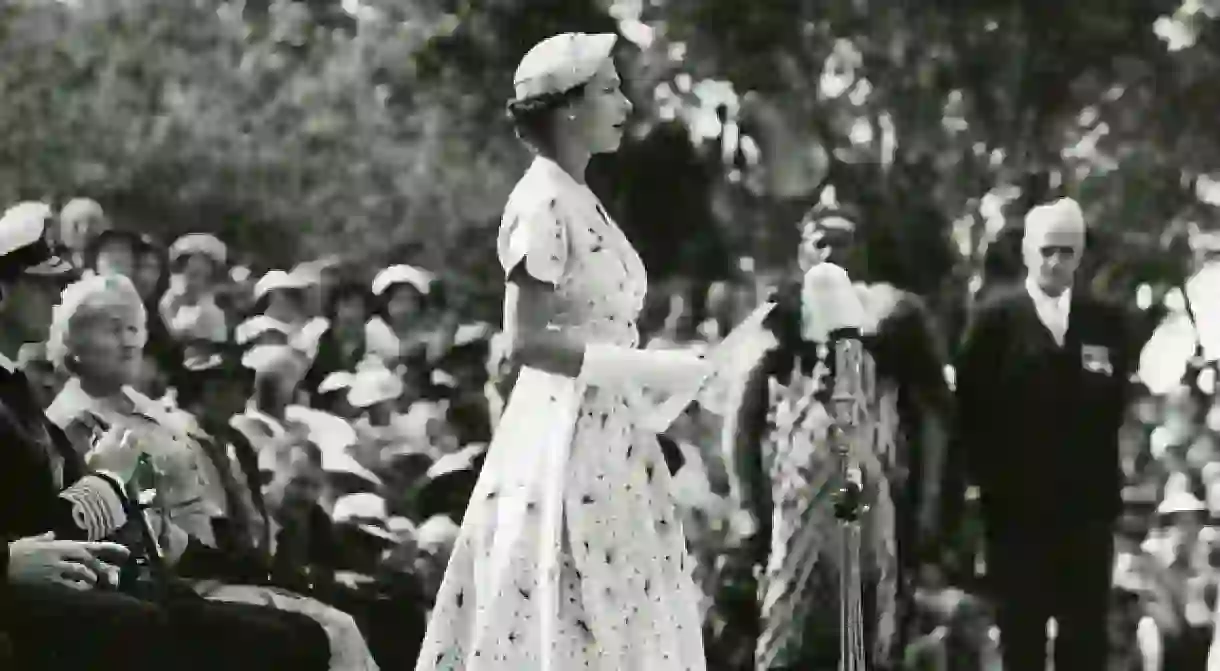Is Queen Elizabeth II Really Related to Prophet Muhammad?

A fascinating claim about the ancestry of Her Majesty Queen Elizabeth II has recently surfaced online. From reputable news sources to daily newspapers, various bodies have been debating, critiquing and analysing the idea that the Queen is descended from the Muslim Prophet Muhammad (PBUH). Here’s what you need to know.
Origins
The first recorded suggestion of Queen Elizabeth’s relation to Prophet Muhammad (PBUH) originates from genealogist Harold B. Brooks-Baker in 1986. In a letter to then British Prime Minister Margaret Thatcher, he claimed that “the blood of Muhammad flows in the veins of the Queen” which he regarded as common knowledge among Muslim leaders. This claim has wider implications as, if it is true, it would also make the Queen a relation of King Mohammed VI of Morocco and King Abdullah II of Jordan as well as Ali Khamenei, the Supreme Leader of Iran.

Resurgence of the claim
In March 2018, writing in an article for Moroccan newspaper Assahifa Al-Ousboue, Abdelhamid Al-Aouni supported Brooks-Baker and claimed that the Queen’s lineage can be traced back 43 generations to the Prophet according to the following lineage:
– Allegedly, Abu al-Qasim Muhammed ibn Abbad, a descendant of Prophet Muhammad (PBUH), was the great-grandfather of Zaida of Seville.
– Zaida, a Muslim refugee who fled the Berber forces in Seville, went to the court of Alfonso VI of Castille where she became his concubine and later, his wife.
– Two centuries later, their descendent, Isabella of Castille, married the first Duke of York, Edmund Langley and gave birth to Richard of Conisburgh, Earl of Cambridge. He later fathered Richard Plantagenet, Duke of York, who is commonly believed to be an ancestor of the Queen.

Consulting the experts
Brooks-Baker was the publishing director for Burke’s Peerage Limited, a genealogical publication of some 200 years standing devoted to researching the ancestry of British royals and nobility.
However, his revelations have often been disregarded as purposefully controversial and outlandish to achieve results similar to today’s clickbait headlines. In his 2005 obituary, Brooks-Baker was described as a “self-appointed authority on all matters royal” who “was often wrong” and if proved correct, was simply responsible for making obvious claims. The Telegraph also reported that, diverging from their impartial stance when it comes to rumblings in the press, Buckingham Palace issued a statement to clarify that Brooks-Baker knew no members of the family, and that his declarations were made without knowledge or authority. The Times reported that “officials are understood to have paid little attention in the past” to the claims made by Brooks-Baker.
Brooks-Baker and Al-Aouni’s claim has divided experts, as some support the unearthed evidence, while others vehemently dispute it.
British historian David Starkey states that the “medieval monarchs of Spain and the Islamic royal houses were very close” and, at the same, “intermarriage between English and Spanish royal families” have been common throughout history. This cautious response acknowledges the possibility of the Queen being related to the Prophet (PBUH) and does not outwardly denounce it. However, it is far from being proof.
At the same time, Lesley Hazleton, an academic and author who focuses on religion and politics and is considered an expert on Islam, critiques it as “clickbait.” According to Hazleton, the claim is simply a reaction to the “demonisation of Islam in the West” which shows a hope that “respectability” might be accorded to the religion.
Historians and genealogists also argue the historical accuracies upon which the claim is built. This claims rests on the idea that Zaida of Seville was the daughter of Abu al-Qasim Muhammed ibn Abbad, who, in turn, was descended from the Prophet (PBUH). However, Zaida’s own origins are debatable as some argue that, rather than being Abu al-Qasim’s daughter, she merely married into his family.
Following the 2012 discovery of Richard III’s remains in a car park in Leicester, various genetic tests have been conducted on the Plantagenet King. Recent research has brought into question his relation to the Queen, suggesting she does not descend from him and therefore, by extension, cannot be a descendant of the Prophet Muhammad (PBUH).
Many have pointed out that “if you trace anyone’s lineage back far enough, you discover – shock horror – we’re all related to each other eventually.” – meaning that there is a significant difference between being directly descended from someone or simply being related to them. The Observer tries to put this in perspective by demonstrating that a child born in 1947, would have had 1,024 ninth-grandparents: compare this to the Queen, who is purported to be the 43rd great-granddaughter of Prophet Muhammad (PBUH). Supposing that this is true, the Queen would have hundreds of thousands of 43rd great-grandparents.
And so with gaps in historical records and no genetic evidence, it is difficult to prove the relation between an 11th-century Muslim princess and a 20th-century British Queen, never mind a 7th-century Prophet.













